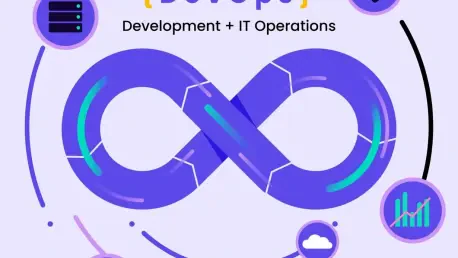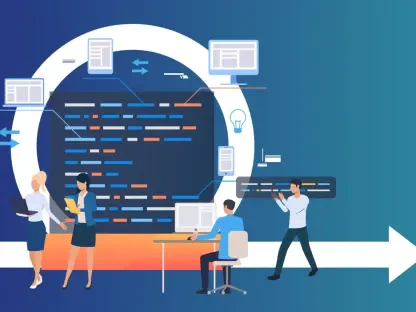Today, we’re thrilled to sit down with Anand Naidu, our resident development expert with extensive knowledge in both frontend and backend technologies. Anand brings a wealth of insight into coding languages and software architecture, making him the perfect person to discuss a groundbreaking framework proposed by MIT researchers. In this conversation, we’ll explore the challenges of current software development practices, dive into the innovative concepts of “concepts” and “synchronizations,” and uncover how this approach could transform safety, transparency, and efficiency in coding—especially for DevOps teams and AI-driven tools.
How would you describe the biggest flaws in the way software is developed today?
Honestly, the biggest issue is that software systems are often a tangled mess. It’s not about developers lacking skill—it’s about how systems are structured. Features are fragmented across multiple services, so even a simple task like adding a “share” button involves digging through different parts of the codebase. This makes it incredibly hard to see the full picture, leading to unexpected issues when changes are made. It’s like trying to fix a car engine without a clear diagram; you might accidentally mess up something unrelated.
What makes adding a new feature to an existing system so challenging for developers?
The challenge comes down to hidden dependencies. When a feature is split across various components—like authentication, notifications, and data storage—there’s no single place to look for how it works. Developers have to hunt for connections buried in low-level code, and changing one piece risks breaking another. It’s a guessing game, and the stakes are high because you often don’t see the problem until it’s live.
Can you explain the idea of “feature fragmentation” and why it’s a problem?
Feature fragmentation happens when a single functionality, say “sharing a post,” is scattered across multiple parts of a system. There’s no central spot to understand or manage it. This makes development harder because you can’t easily track how everything connects, and it’s dangerous because a small tweak in one area could unintentionally disrupt something elsewhere. It’s a recipe for bugs and maintenance headaches.
Let’s dive into the new framework you’ve been exploring. In simple terms, what are “concepts” and “synchronizations”?
Sure! Think of “concepts” as self-contained building blocks of software, each focused on one specific job—like “sharing” or “liking” in an app. They have their own state and actions, and they don’t rely on other parts to function. “Synchronizations,” on the other hand, are the rules that define how these blocks interact. They’re like a clear set of instructions that connect the concepts without messy, hidden code. Together, they make the system easier to grasp.
How does breaking software into independent “concepts” help developers manage and understand code better?
By isolating each concept, developers can focus on one piece at a time without worrying about the entire system. If I’m working on “commenting,” I don’t need to understand every other feature to make changes. It’s like working on a single chapter of a book instead of the whole novel. This clarity reduces confusion and makes it simpler to debug or enhance specific functionalities.
What’s the role of “synchronizations” in tying different parts of a system together?
Synchronizations act as the glue between concepts. They explicitly define how one concept interacts with another, using a straightforward language rather than complex integration code. For instance, they might spell out how “sharing” updates “notifications.” This transparency means developers—and even tools—can see and manage these connections directly, avoiding the usual guesswork.
Can you share a real-world example of how a concept and synchronization might work together in an application?
Absolutely. Imagine a social media app. The “posting” feature could be a concept—it handles creating and storing posts. Another concept could be “notifications,” which alerts users about new activity. A synchronization would define that when a post is created, a notification is sent to followers. Instead of embedding this logic deep in the code, it’s a clear rule you can see and adjust without touching the core concepts themselves.
Why do you believe this framework could make software safer and more transparent?
It’s all about reducing risk and increasing visibility. Since concepts are independent, changing one is less likely to break something unrelated. And because synchronizations make connections explicit, you’re not digging through code to figure out dependencies. This openness builds trust—developers and stakeholders can see how the system behaves at a high level, making it easier to spot potential issues before they become problems.
How does this approach simplify testing and maintenance for development teams?
Testing becomes much easier because each concept can be tested on its own without needing to simulate the entire system. Maintenance is smoother too—if a bug pops up in “sharing,” you know exactly where to look. Plus, synchronizations let you update interactions without rewriting core logic. It’s like maintaining a modular piece of furniture; you fix or replace one part without dismantling the whole thing.
You’ve mentioned this framework could be a game-changer for AI and coding tools. How does it help with tools like large language models?
Current AI tools struggle with fragmented codebases because they can’t see hidden connections, often leading to buggy outputs. This framework lays everything out clearly—concepts define what each piece does, and synchronizations show how they link. An AI can read this like a map, making it far easier to generate accurate code or suggest fixes without introducing side effects. It’s a huge step toward reliable automation.
What specific benefits does this framework offer to DevOps teams in particular?
DevOps teams deal with the stress of deploying changes without breaking things. This framework helps by giving a high-level view of how features connect, so you can predict the impact of a change before it goes live. Instead of crossing your fingers during a deployment, you have a clear picture of what might be affected, reducing the chance of errors or needing to roll back changes in production.
How do you see this framework shaping the future of software development?
I think it could fundamentally shift how we build and maintain software. We might move toward reusable “concept catalogs”—libraries of tested modules that teams can mix and match. Development could become less about writing from scratch and more about assembling and connecting well-defined pieces. It also opens doors for AI to play a bigger role in coding with fewer risks. Overall, it’s a path to more predictable, reliable systems.
What’s your forecast for the impact of this framework on DevOps practices in the coming years?
I believe we’ll see a gradual adoption that transforms DevOps into a more proactive field. With clearer visibility into system interactions, teams will spend less time firefighting and more time optimizing. Automation will get smarter, and deployments will become less of a gamble. Over the next few years, I expect this approach to set a new standard for how we manage complexity, making reliability as important as speed in continuous delivery.









